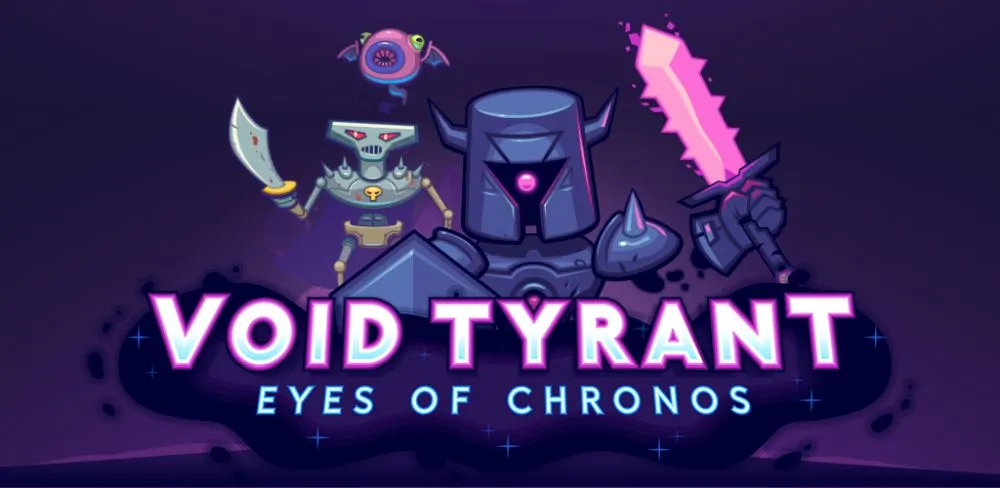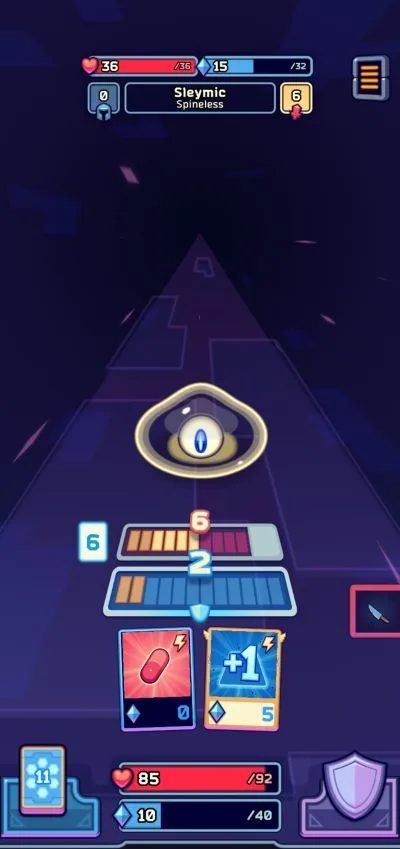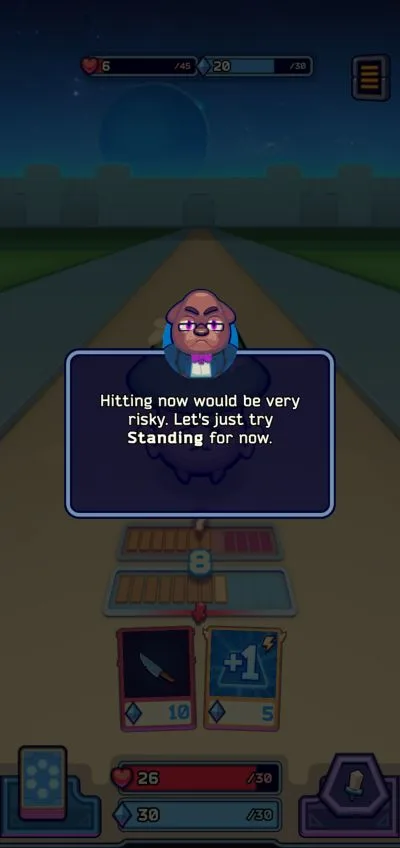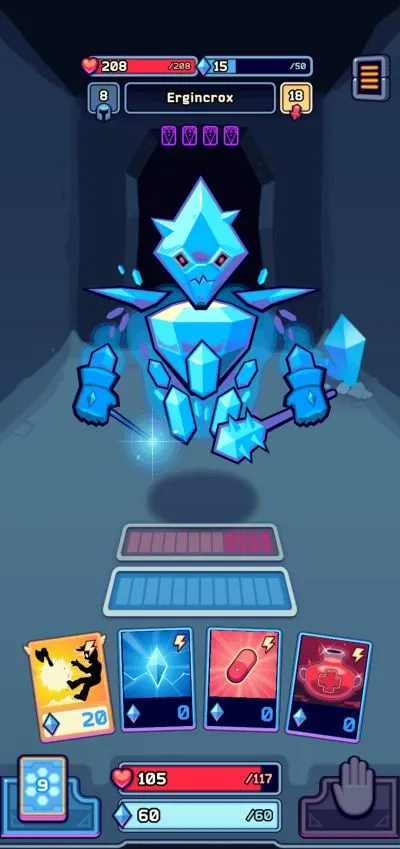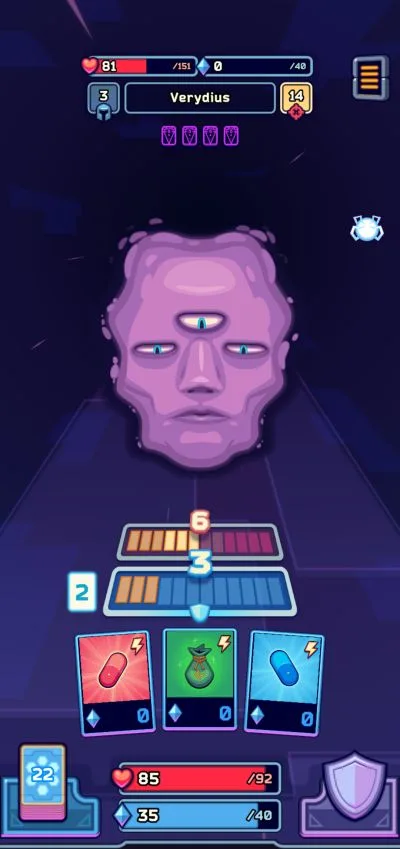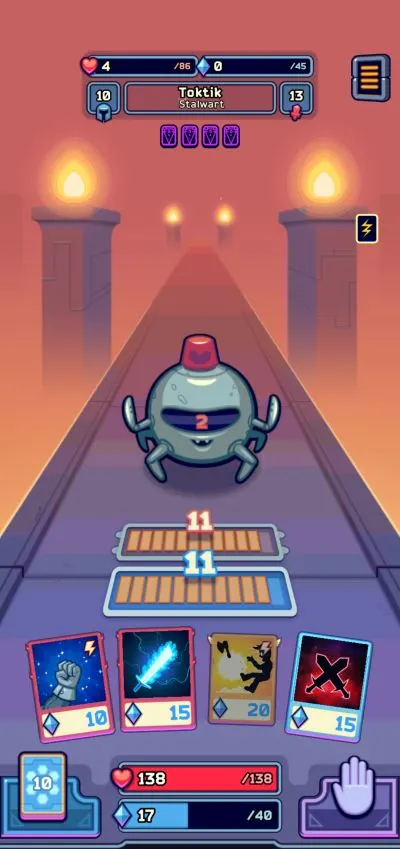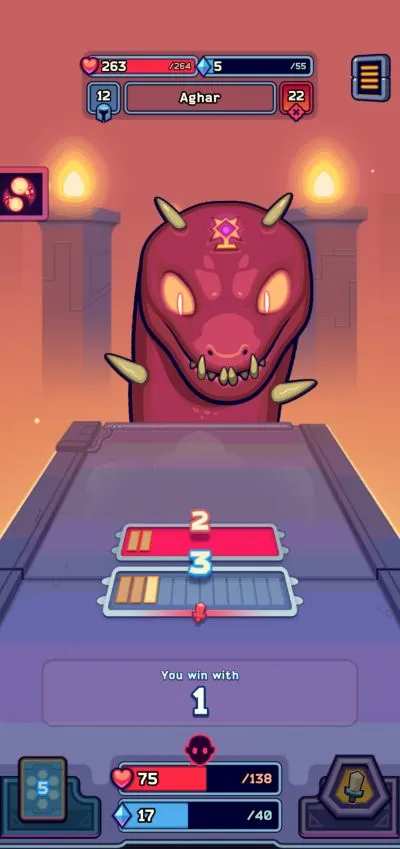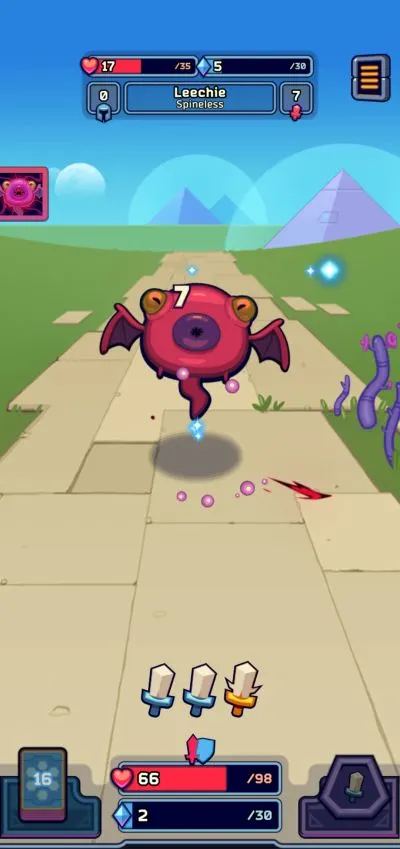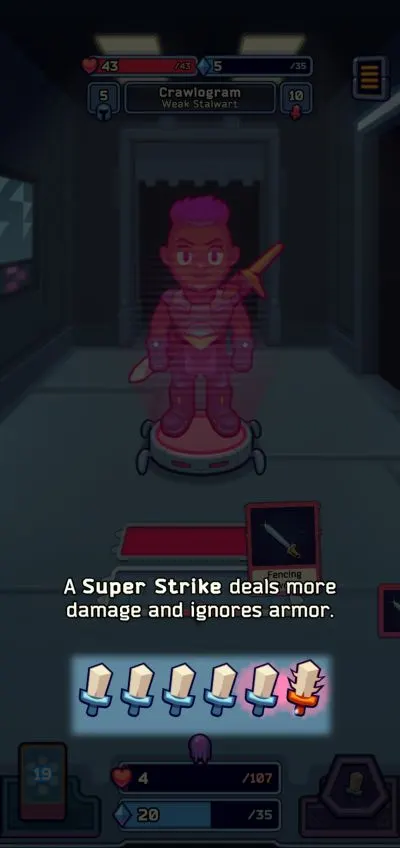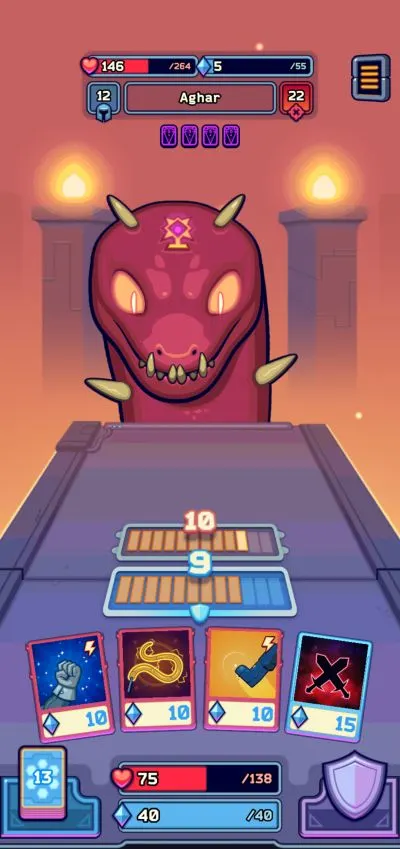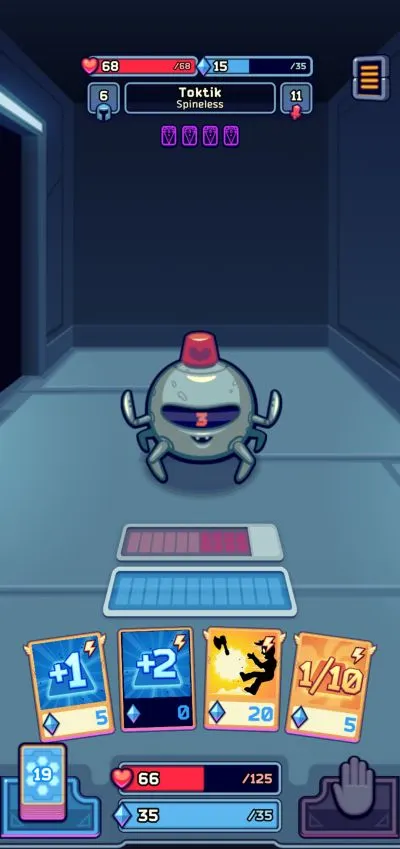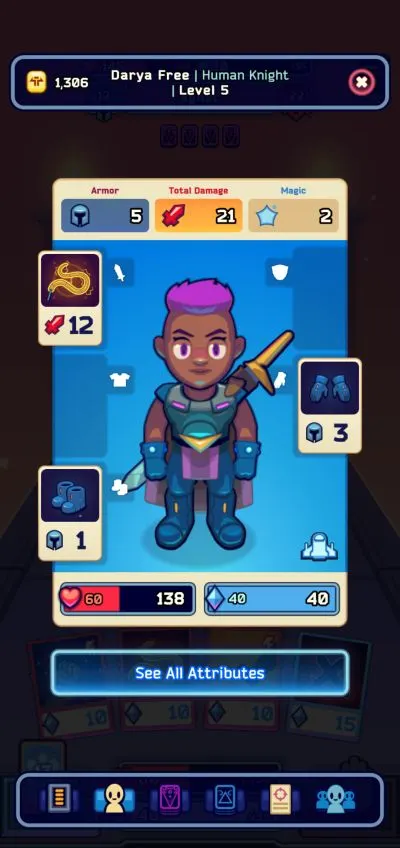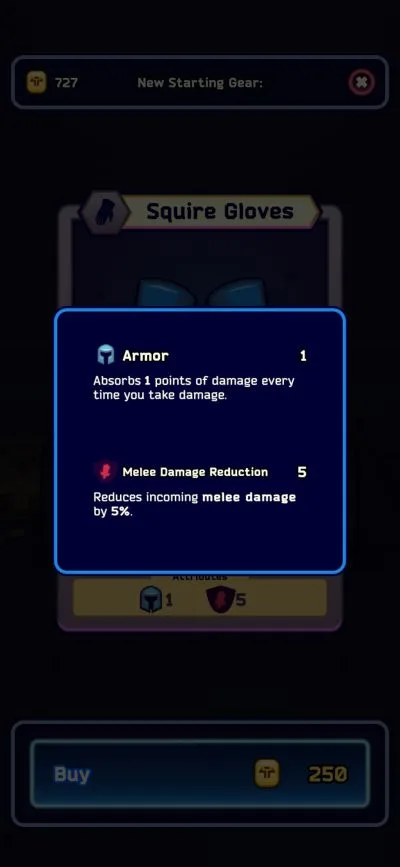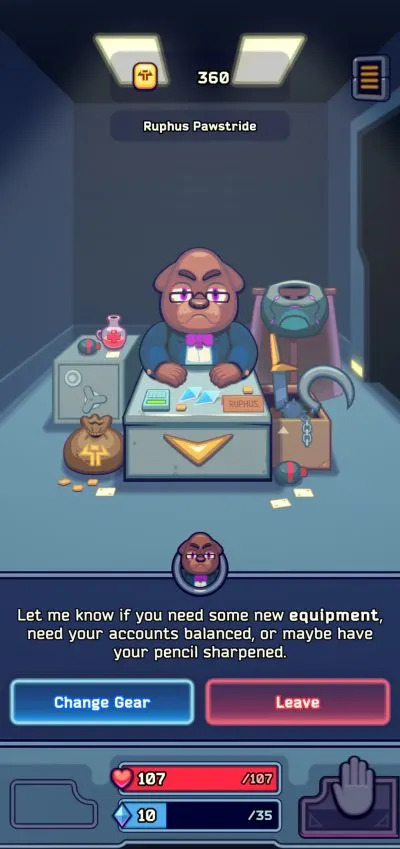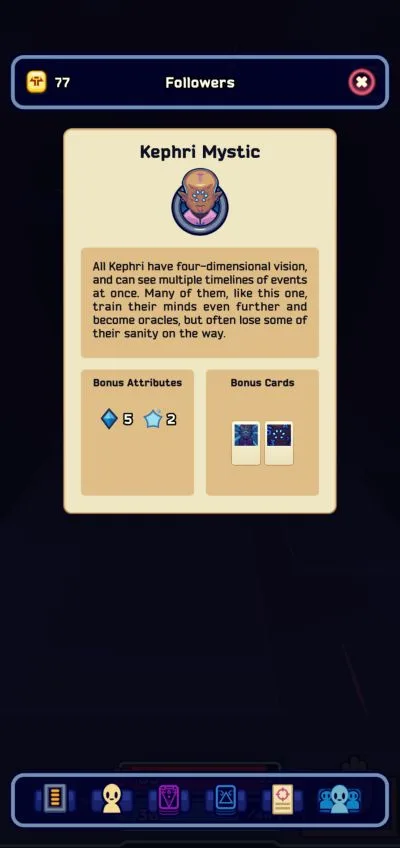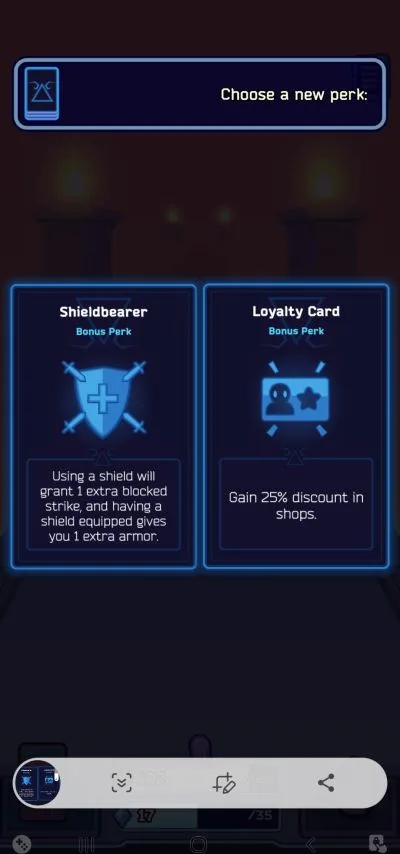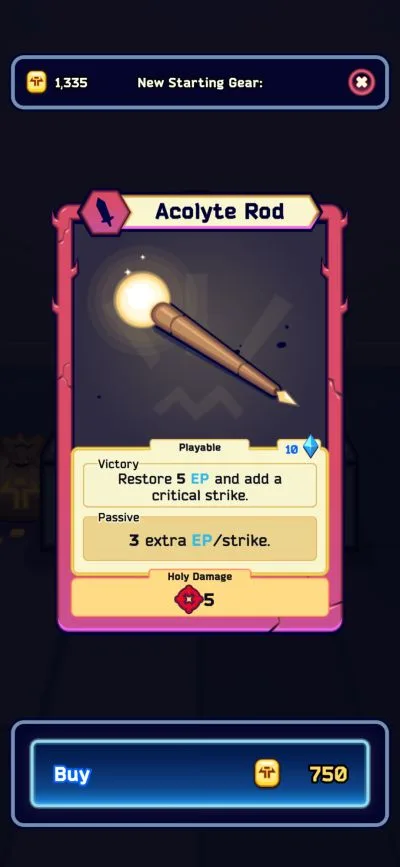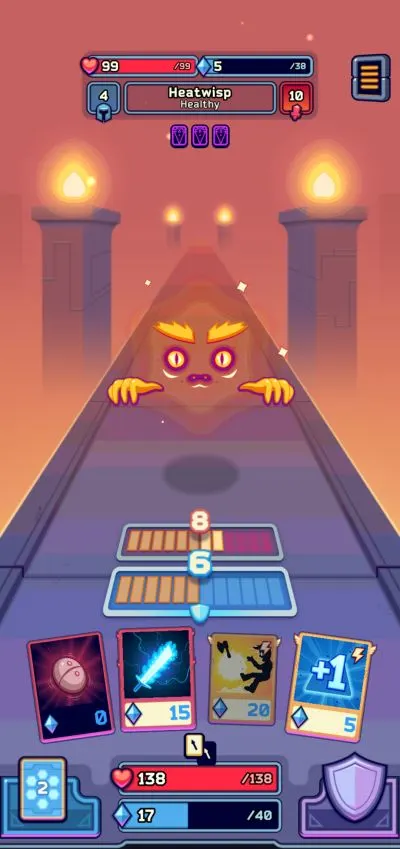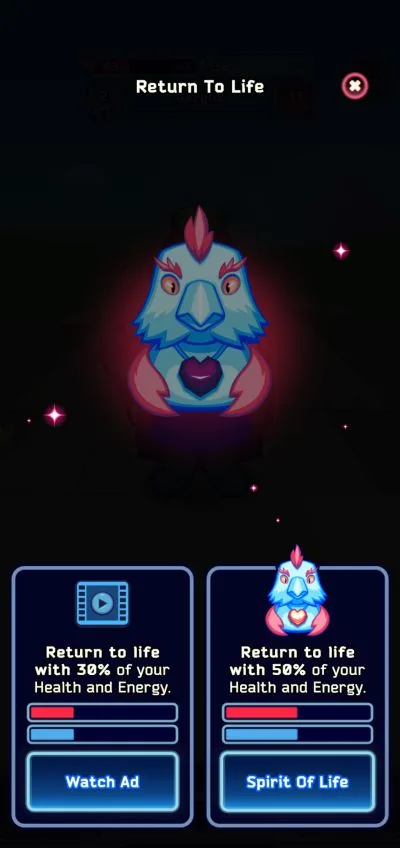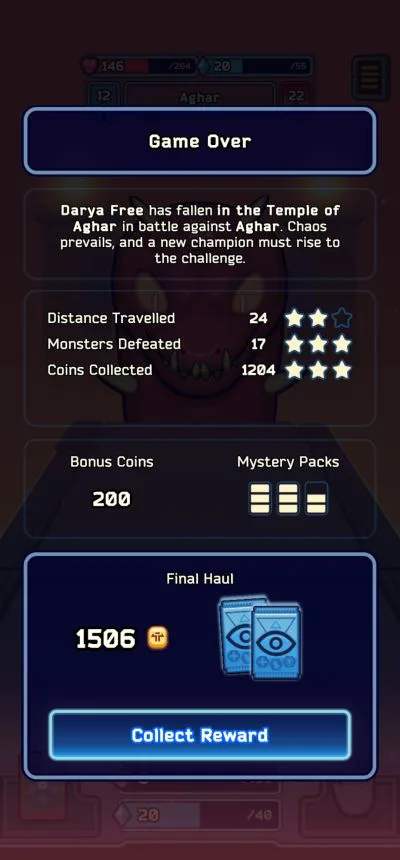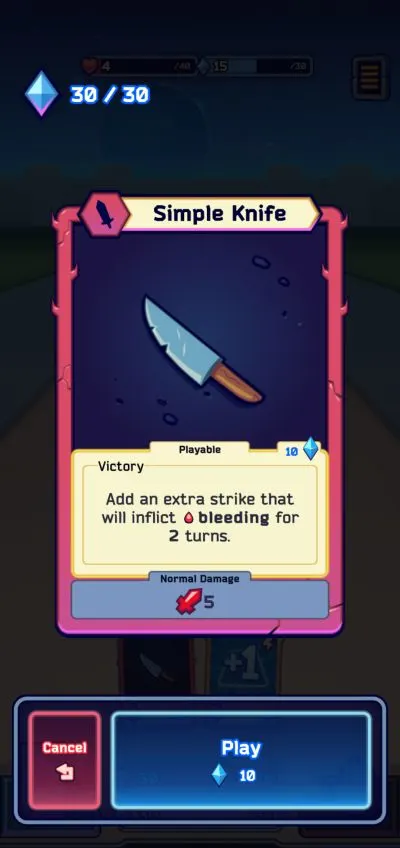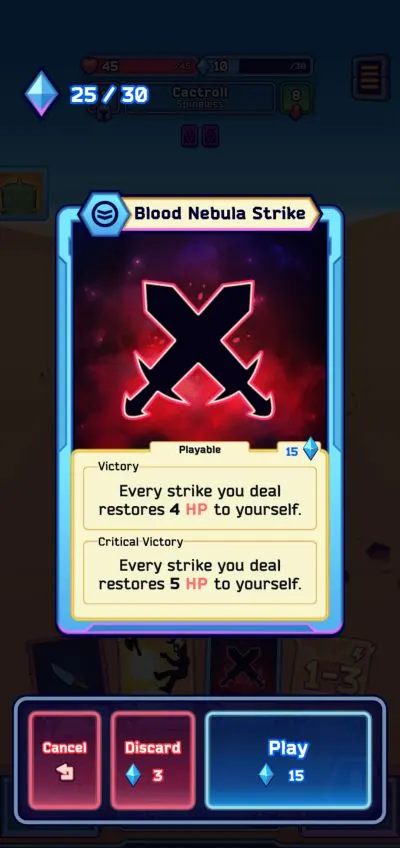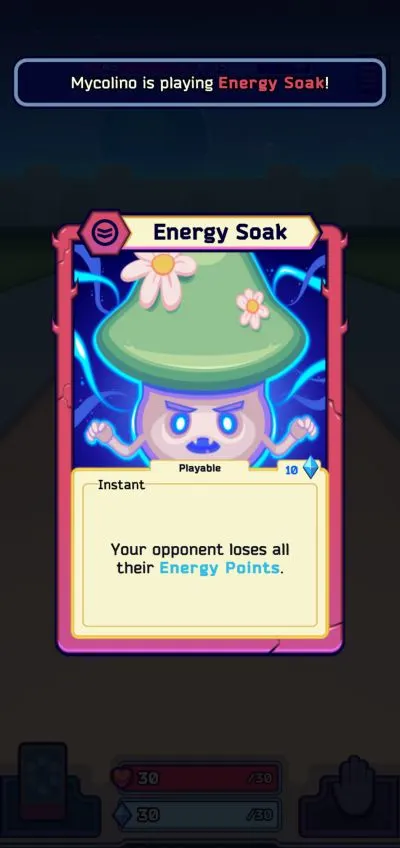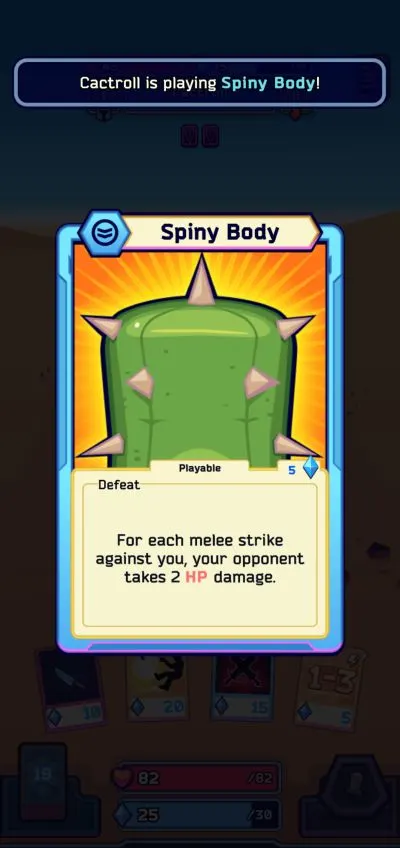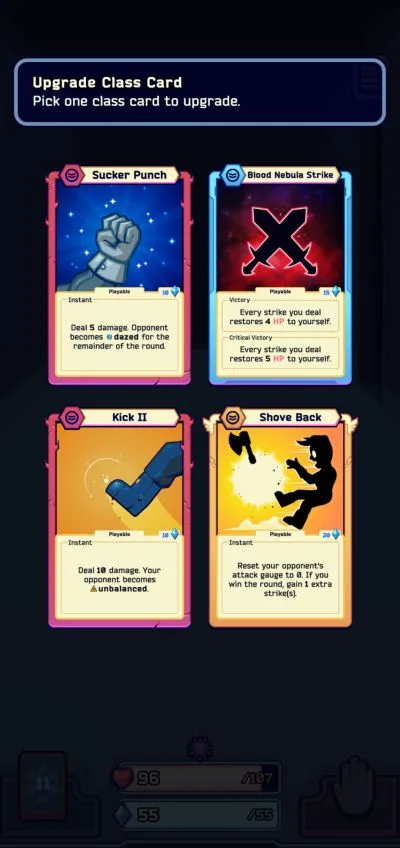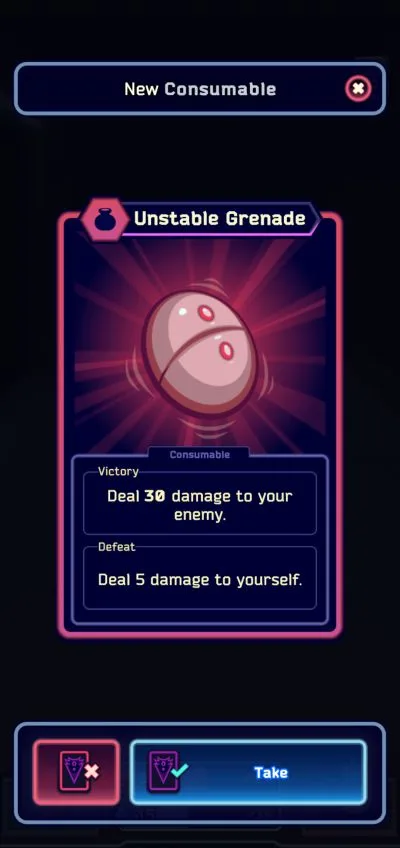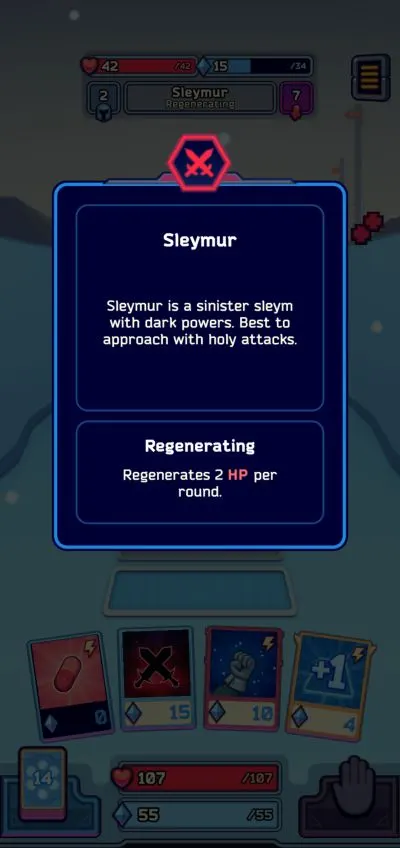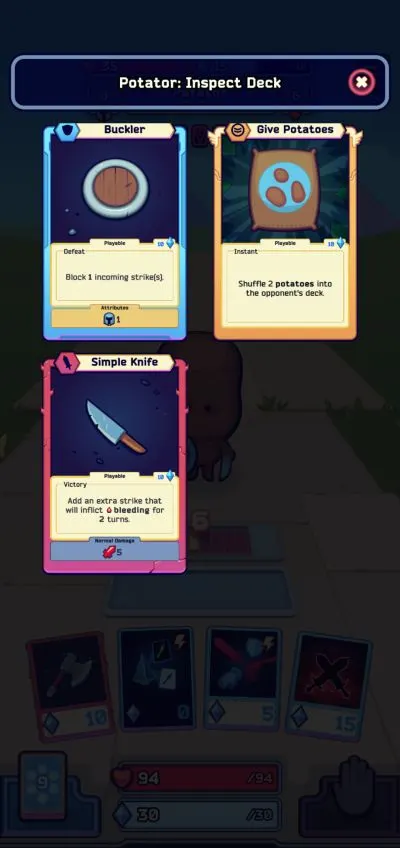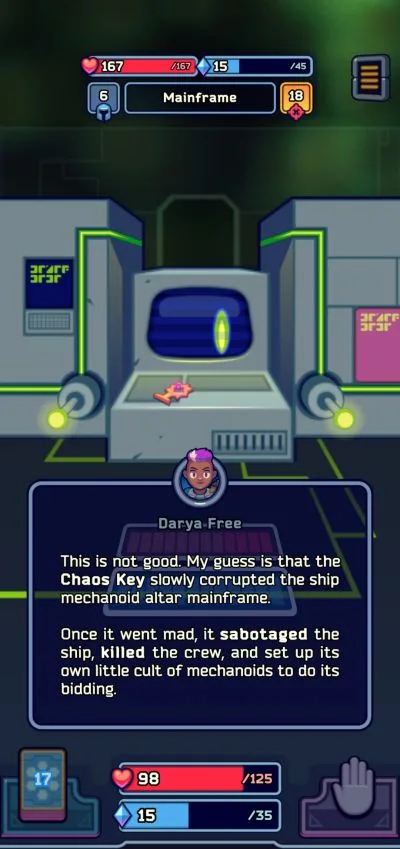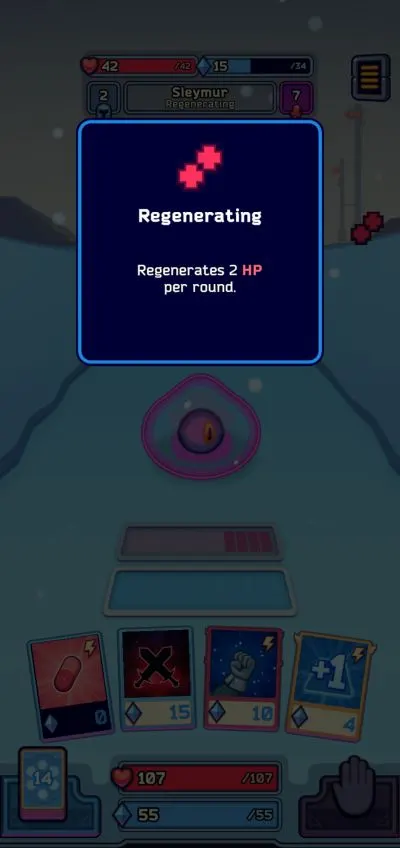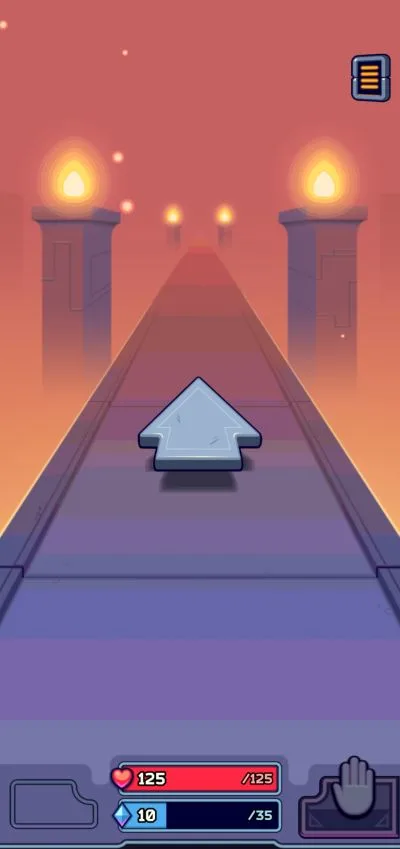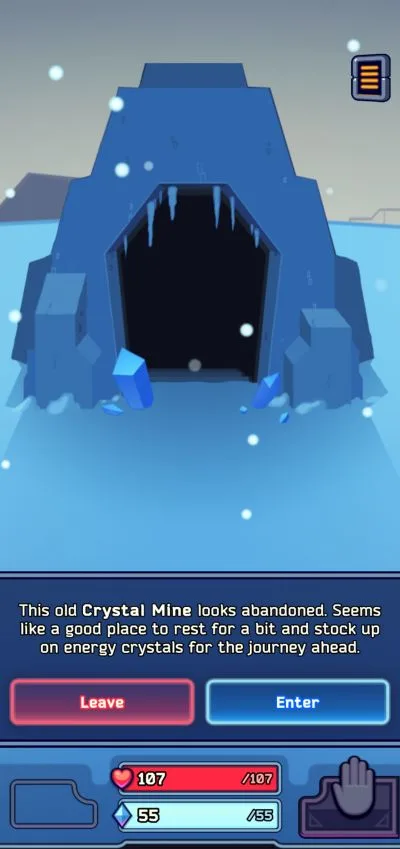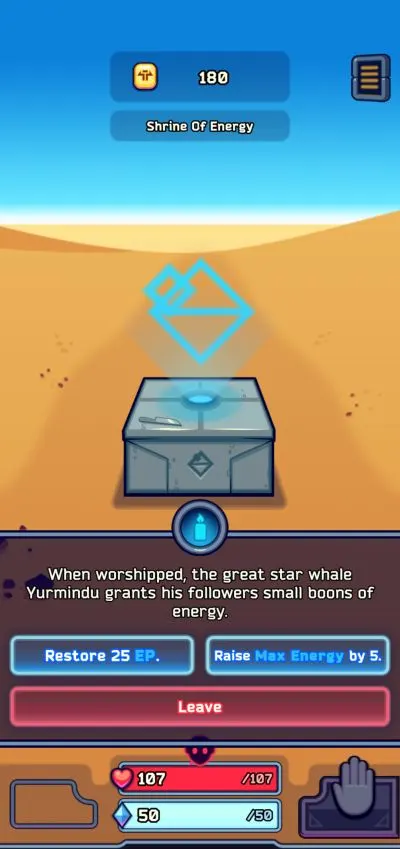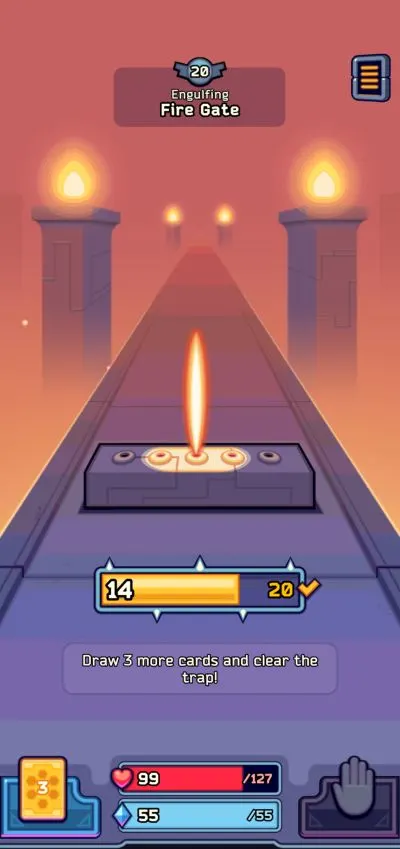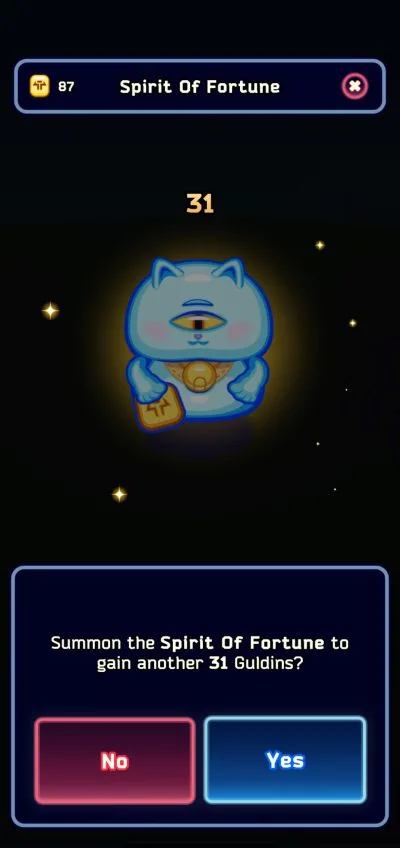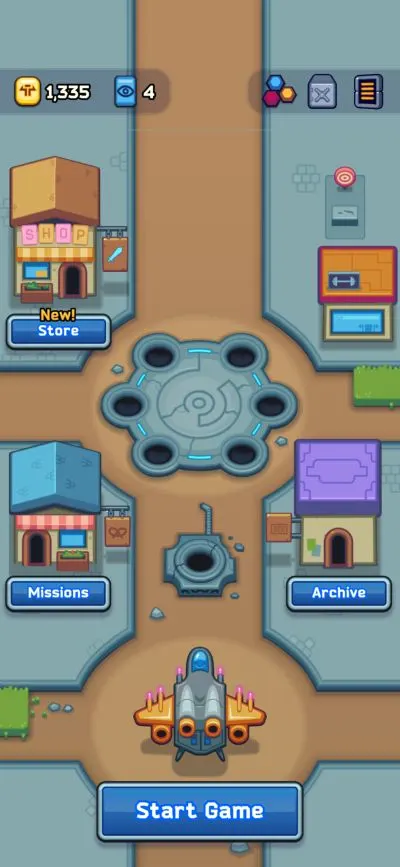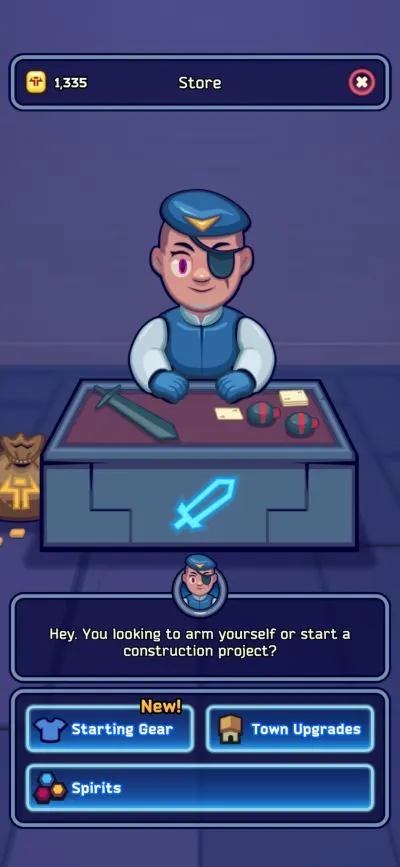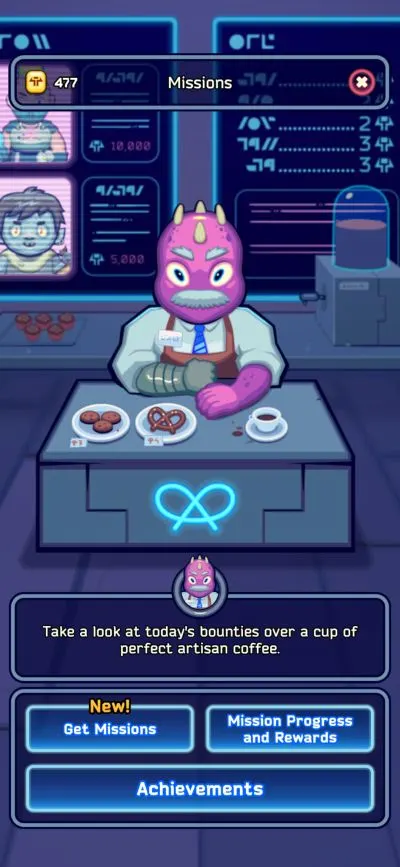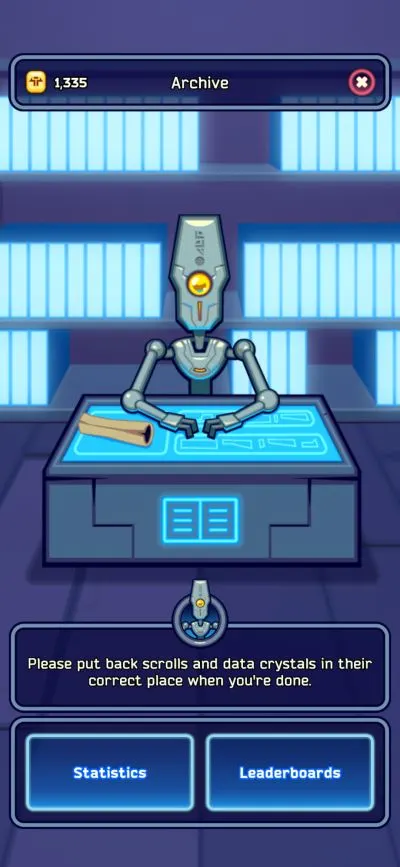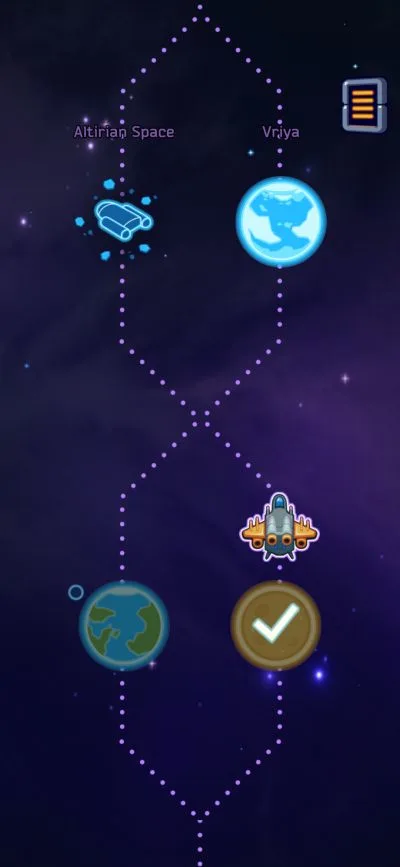First, we saved the world from evil via solitaire in Solitairica, and now the universe needs us again. This time though, our weapon is…blackjack.
Void Tyrant is a deckbuilding roguelike from Armor Games, that utilizes the simple mechanics of blackjack as a foundation for the rest of its gameplay. However, it twists these gameplay rules to create a unique, fun, yet intuitive experience. Void Tyrant is available for download on iOS and Android platforms.
A word of warning for those trying to run Void Tyrant on emulators – it doesn’t seem to work as of May 21, 2022. I’ve tried running it on multiple emulators, including those with 32 and 64 bit architecture, and no dice.
With that said let’s get started with our Void Tyrant beginner’s guide, as we share with you some tips, tricks and strategies to battle across the galaxy and reclaim the Eyes of Chronos!
Combat Basics
Void Tyrant is very combat heavy, and while a lot of it can be figured, there are a lot of intricacies that can give you a large advantage if you know about them beforehand.
Blackjack Basics
Before we dive into Void Tyrant, you’ll need to first understand the basics of blackjack (if you already know them, skip away!)
Blackjack is a card game that’s a mix of luck, courage, and mathematical skill. In blackjack, players fight against a dealer by drawing cards until they’re satisfied (known as standing, and no, you can’t change your mind if you already declared that you’re standing), if they hit 21 (an automatic win), or go over 21 (known as busting). At the end of a round, if no one has hit 21, the player with the value closest to 21 wins. Note that this means you cannot skip a turn – you must either hit or stand.
Void Tyrant uses a pared-down version of these mechanics. For starters, the card limit and automatic win is 12, not 21. In addition, card values range only from 1-6 for a better range within the smaller upper limit. All other things are the same – you can keep hitting until you declare that you’re standing, and drawing over that limit is an automatic loss.
Void Tyrant also has a special rule in place that you won’t see in regular blackjack – if either the player or enemy has decided to stand, and their opponent manipulates their attack gauge, that player can once again opt to hit or stand.
AI and Standing
Since blackjack does require a human element of recklessness, Void Tyrant uses a special system to make enemies decide that they’ve had enough.
If an enemy ends its attack gauge in the dark red section, that means that they’re going to stand. Conversely, this also means that an enemy will never stand at a number below that section.
Attacking
Winning a single round of blackjack isn’t the end in Void Tyrant. Each blackjack round is more similar to rolling for initiative and attack rolls in a Dungeons and Dragons game: it only determines who attacks, and who takes damage.
As you may have guessed, the player that wins is the one that does the attacking. Upon winning the blackjack round, the winner will attack the loser a number of times equal to the difference between their points. If the player stands at 11, and the AI stands at 6, the player will attack for a total of 5 times!
Attacking is also the main way of generating energy. Without modifiers, each strike against an enemy heals 5 energy points. That also means the loser gets no energy.
Ties
A tie happens when both you and the enemy stand with equal attack gauges. If this happens, neither party will attack, but you will still regain energy.
Overcharging
Busting in Void Tyrant is called overcharging, and is also an instant loss condition for the round. As if it’s bad enough that the overcharger loses the blackjack round, they’ll also be attacked!
The math behind this is a little vague, but my research showed that it more or less follows these rules:
- If the other player’s gauge is at 7 or higher, the overcharger’s attack gauge is set to 6.
- If the other player’s gauge is less than 6, the overcharger’s gauge is set to the other player’s gauge – 1.
Essentially, this means that there’s less of a penalty for overcharging when your opponent is at 6 or less as you’ll only get hit once. The opposite applies to your opponents too: even if they overcharge, so long as your gauge is below 6, they won’t suffer too badly.
Critical Wins
If you’re a lucky or clever card player and end your board with a 12, you earn what’s called a critical win.
A critical win causes the last attack you’ve earned to be critical, dealing much more damage than usual – around 50% more in my experience. Do note that if you get a critical win, you can’t play any more hand cards nor hit as the game considers you to have already won. If you’re planning to do some tricky stuff using critical victory hand cards, do so before you hit again.
Super Strikes
Critical hits aren’t the final multiplier. If you’ve already scored a critical win and your opponent overcharges, your critical hit becomes a super strike.
Super strikes are incredibly potent attacks that not only deal even more damage than a critical hit, but also completely ignore enemy armor when calculating damage – meaning just a single super strike can make a huge dent in your opponent’s hit points!
Defending
If you don’t like your odds, you can always opt to defend by standing at your lower attack gauge. When you defend, you gain 2 bonus armor for the round, meaning your opponents deal 2 less damage per strike.
The Dealer Deck and Counting Cards
If you’re like me and have played a stupidly large and frankly unhealthy amount of card games, you’re probably going to be automatically counting cards in your head. Counting cards refers to the practice of trying to determine whether or not you or the dealer has the advantage in drawing a card, and what the odds are of drawing a card that will either win you the game or overcharge you.
This is simple probability mathematics – for example, if you’ve already drawn 3 of your 4 6 cards, the odds are very low that the next card will be the last 6 in your deck. While it’s not a precise science, it is more or less a reliable method to assess the risks of drawing that next card.
You don’t need to do this to win the game, but for those that want an extra edge, keep these facts in mind:
- The player and the AI both have the same dealer deck.
- The dealer deck is composed of 24 cards: 4 copies each of cards ranging in value from 1 -6 (4 1’s, 4 2’s, and so on)
- When there are no more cards to draw, the dealer deck is shuffled and refilled.
- The deck is not refilled in between fights. You will always start a fight with however many cards you had left in the dealer deck.
Understand the RPG Mechanics
Winning the blackjack game is only the beginning, as that only determines who attacks and what happens. The RPG mechanics of Void Tyrant are where the meat of the game is at, and without honing both your blackjack skills and your character, success is going to remain a distant dream.
Stats
Every entity in Void Tyrant has stats, which are quite straightforward.
Each character has a health stat and an energy stat, the former of which determines how many hits you can take and the latter is used to pay for hand cards (more on that later). Each character also has an attack stat and an armor stat – which influence the amount of damage done per strike and the flat amount of damage reduction from each hit taken.
Equipment
As the universe’s only hope to reclaim the chaos keys, it’d be a bit callous if your heroes were expected to fight naked, wouldn’t it? That’s why you can outfit them with a range of equipment that’ll both improve their offense and defense.
Heroes have five equipment slots: a helmet, body armor, boots, as well as a weapon and an offhand slot. Each of these items provide passive bonuses to your hero, which range from something as simple as more armor to more complex stuff, such as clearing debuffs.
Equipment can also come in the passive and active varieties. Active equipment is also added to your hand card deck, where you can play that card to activate its abilities (and yes, this is separate from its equipment bonuses, which you always have on). You’ll most commonly see weapons as active cards, but there are exceptions.
While the best equipment is always found during a quest, your new recruits aren’t entirely defenseless. You can opt to buy starter equipment for your heroes at the shop in your base (more on that later) and if, for whatever reason you picked up a piece of equipment you don’t like, you can always change item slots into their starter equipment equivalent at the ship when a level begins, by taking a left turn.
Followers
Followers are special characters that will accompany you on your adventurer.
While you have a follower in tow, your hand card deck will also have that follower’s specific cards, and you’ll also gain a stat boost depending on the follower.
Leveling Up
After winning enough battles, your hero will gain a level. On level up, you’ll be presented with many choices, such as increasing one of your base stats, upgrading a class card, adding a new card, and taking a new perk.
Attack Types and Elements
Attacks in Void Tyrant are actually a lot more complex than just smacking an enemy X amount of times. For instance, did you know there are different attack types and elements?
Attacks can be melee or ranged, which have their own characteristics as well as enemy countermeasures. The Leechie, for example, has a hand card that gives it a 50% chance to dodge a melee attack. There’s a third pseudo damage type known as magic, which impacts the amount of damage your magic-based hand cards do and is the forte of the Priest class.
Elements, too, play a part. They allow damage to come from different sources, such as physical (normal), heat, cold, electric, nature, holy, and dark. Do note that there is no rock-paper-scissors rule in place here, and you should always check what each specific enemy is weak to – though there are general rules such as robots being weak to electric. As a side note, your heroes are always counted as normal-type for damage calculation.
When attacking or being attacked, you can check the colored aura around the attack icon (or the background color of the enemy’s attack stat) to determine its type – red is heat, blue is cold, yellow is electric, green is nature, light yellow is holy, and purple is dark.
Defeat…or Is It?
Once your health hits zero, you lose, and the game is over. Unless, of course, you decide to be revived.
Each run in Void Tyrant comes with one extra life by default. This life is consumed when you hit zero health, and gives you the option to be revived on the spot with 30% of your health and energy. And yes, this will continue the fight exactly where it left off. Of course, this isn’t free unless you bought the game. You’ll have to sit through an ad to be revived.
It’s Definitely Defeat
Don’t worry though, we all go down at some point.
When you wipe out and can’t (or won’t) revive, the game is over, and you’ll be given rewards based on how far you got – secret card packs for a headstart for your new hero, as well as any Guldins you got for buying town upgrades and new stuff.
Hand Cards and Deckbuilding
You didn’t think the game would rely solely on blackjack mechanics, did you? That would be quite dull, after all, and that’s where hand cards come into play. By carefully constructing a deck of hand cards, you can help make up for bad luck during the blackjack round, and apply a plethora of effects, such as direct damage to buffs and ailments or even extra attacks!
Hand Cards
During your turn, you also draw cards from a special deck comprised solely of your hand cards, with an initial maximum hand size of 4. You don’t discard your hand cards at the end of your turn and thus, you’ll only draw new hand cards from your deck if there’s a slot available in your hand.
These hand cards have abilities that range from so-so to potentially game-changing. You can always play hand cards as long as you can pay the energy cost that’s listed both on the card (lower right of the card art) and on the big play button at the bottom.
Do note that some cards aren’t instant – instead, they’re queued and will activate on a specific event. The Simple Knife card above, for example, lists victory as its condition – so we first need to win on our attack roll before it applies its effect.
Armed with your hand cards, surely victory is close at hand?
As you can see above, enemies will also play their own hand cards to trip you up and disrupt your strategies, leading to defeat in the worst case scenarios. When an enemy plays a hand card, the game will show you what it does, so you can’t claim that you didn’t read. This also adds another layer of complexity to the game, namely memorizing the hand cards of each enemy which is something that can only be gained through experience.
If you find yourself bricking (meaning you’ve got a hand of hard-to-use or outright useless cards), you can also opt to discard a hand card by tapping it then selecting discard, or dragging it to the bottom of the screen. Note that while the first discard per turn is free, succeeding discards will have an incrementally increasing energy cost for discarding them. Whenever you discard a hand card, you will also draw the top card of your deck, effectively replacing that hand card.
Finally, note that your hand card deck will always reshuffle at the end of the turn meaning that you can both never deck out and have to be very judicious in what to add or remove.
Class Cards
Each class has its own set of default class cards, which are automatically added to your hand card deck when you pick that class. These class cards usually complement that hero’s strategy, and while they’re not particularly fantastic, they can be pivotal in securing success, as well as guiding you towards using certain strategies.
Consumables
Some hand cards are consumables, meaning that once activated, they’re removed from your deck.
Consumable cards are marked not only as such on the card itself, but are also easily distinguishable thanks to their black borders. Do also note that cards from the spirit of secrets are all consumables, so that answers your question of “where did my incredble game winning cards go”.
Battlefield Information
Games like Void Tyrant rely heavily on having a lot of information and knowing what to do with that information.
Enemy Basics
Each enemy is unique, and some may have innate characteristics that will play into how best to defeat these enemies. Memorization definitely helps, but for first time players, you can always tap the enemy’s name at the top of the screen to get a short blurb about that creature and what it may be weak to.
Your opponent’s stats are visible at the top of the screen – their health and energy at the very top and their armor and attack damage to the left and right.
Enemy Characteristics
Each enemy can also have random modifiers applied to them. You’ll be able to see these as extra prefixes located below their names, such as “healthy”, “spineless”, “encouraging”, “stalwart”, and so on.
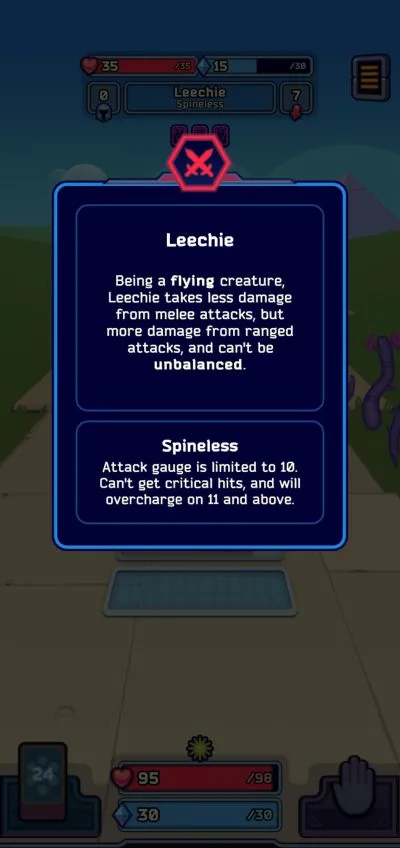
These modifiers can vastly change how an enemy operates, and I highly suggest you take the time to read what they do (again, by tapping the name) since this will also clear the way for memorizing what these modifiers are.
Enemy Deck
It may not be immediately apparent, but you can actually check your opponent’s hand cards and deck. To do this, tap on the purple cards that appear below their name.
By looking at your opponent’s deck, you can plan counter strategies against their nastier hand cards, such as those that wipe out your attack gauge or instantly fill theirs to 11 or 12 (yes, that’s a thing one boss does).
However, remember that just like you, enemies also require energy to use their hand cards. Time your moves and countermeasures carefully and don’t be afraid to play defensive if you feel the need to.
Bosses
Bosses in Void Tyrant are encountered at the end of a chapter. They are usually precluded by a short dialogue before the fight begins. Bosses are powerful, dangerous foes often corrupted via a Chaos Key – the object of your quest. While they’re deadly opponents, you will have to take them down one way or another.
Boss encounters in Void Tyrant are often protracted encounters. Always check a boss monster’s hand card deck as it will give you an idea of how that boss operates, and don’t be afraid to play defensively until you’re sure you can get a few hits in.
Luckily for us, bosses aren’t determined randomly – each planet always has a specific boss, so after you play a while, you’ll have a good idea of what’s waiting for you on each planet and can determine where you should go, based on how confident you are in your build.
Buffs and Debuffs
With so many buffs and debuffs in the game, it’s quite easy to get lost in what they do, who has what, and for how long. If you ever find yourself in this situation, remember that you can tap buff and debuff icons to see what they do. An enemy’s icons are on the right side of the screen, while yours are above your health bar.
Map Navigation
Each planet in Void Tyrant serves as a dungeon with enemies to fight, treasures to unearth, and wonder to behold. By making the most out of each planet, you’ll be one step closer to a better deck and victory.
The Middle Path
There are no complex mazes to navigate in Void Tyrant. If you want to rush ahead to an area’s boss, feel free to just keep following the middle path. You won’t get lost either as side rooms are one-way, meaning that you’ll have to return to the middle path.
At the same time, do be prudent in choosing when to process, as there’s no turning back once you move forward.
Side Rooms
Sometimes the path can branch out into side rooms. These rooms are optional, and there’s no way of knowing what they’ll contain. Explore them if you’re feeling brave, greedy, or reckless – the rewards can help you greatly, and even if you get drawn into a fight, you’ll walk away with more experience points.
Side Areas
Exploring side rooms can sometimes reveal side areas. These are mini-dungeons that often contain a boss, but also more rewards that can help you in your quest. Completing side areas is entirely at your discretion; remember that your ultimate goal is to retrieve the Chaos Keys, not beat up every monster in your path.
Random Events
You’ll occasionally encounter random events in some rooms, which are always a welcome respite.
Some of the more common random events you can encounter are D-Spencer, who will sell you potion cards that you can either consume immediately or put into your deck, an equipment vendor who sells a wildly random stock of gear for Guldins, and shrines, which each do something different.
While there’s no way to predict exactly what you’ll find, you should maximize every random encounter you run into.
Traps
A dungeon can’t be all good. Occasionally, you’ll find a trap in a room.
These traps usually require you to select a stat to overcome them, with a random number being rolled for your initial check. You’ll then be given up to 3 more randomly-drawn cards to match or surpass the difficulty check of the trap in question. Succeed, and you can continue on your merry way. Fail, and get ready for more nastiness.
Chests
If you’re especially lucky, you might be able to find random chests that contain both equipment and a healthy amount of Guldins for your next victim hero.
Naturally, these chests also give you the opportunity to double your rewards by watching an ad, which I highly recommend doing as Guldins are the path to permanent progression.
Upgrade Your Town
Like most roguelikes, Void Tyrant does feature permanent progression to help you in your future runs. Any Guldins your fallen heroes gathered will be deposited straight into your account, which you can then use to further improve your town.
The Store
The store serves not only as the hub for buying new equipment, but for town development as a whole.
At the store, you can buy starter equipment for new recruits of a particular class, which will apply to all heroes of that class moving forward. You can also buy new facilities, such as a gym and a shooting range that increase melee and ranged damage, or even a strategy table that increases your hand card size to 5!
Finally, you can also opt to buy spirits, which translates to buying the game so you won’t be interrupted by pesky ads when trying to do certain activities.
Missions
Your missions are available at a cafe, where a moustached alien will offer you refreshments (no you can’t buy them, yes I tried). It’s here that you can take bounties, special missions that involve doing particular actions in a run which will not only give you a leg up in terms of resources or stats, but also unlock new content along the way.
Note that you must take a mission before it starts logging any progress. With that in mind, I tend to visit the mission board as soon as I wipe, so that I can grab any and all new bounties.
The Archives
The archives are where you can see your past failings records as well as see your place on leaderboards. As I use my Google account to play Void Tyrant, the leaderboards for me are for people on the Google Play Store. While there’s no particular reward for hitting the top, it can serve as an extra layer of challenge, and there’s an undeniable sense of pride and accomplishment if you can get into the upper rankings of the scoreboard.
The Chaos Keys Await
No doubt someone is going to run amok and do all sorts of crazy things with those Chaos Keys, so get going!
That’s the end of my Void Tyrant beginner’s guide, and I hope you were able to pick something up from it. If you have anything you’d like to add or have something you want to share, make yourself heard in the comment area below!

